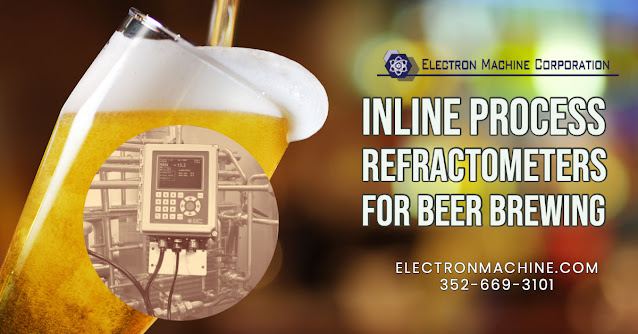This blog focuses on industrial, inline process refractometers and their use in industrial applications. Refractometry is used to measure the refractive index of a substance in order to determine its composition or purity. Posts include information on theory, construction, installation, new products and new markets.
Electron Machine Corporation | Umatilla, FL | PHONE: 352-669-3101 | ElectronMachine.com
Process Refractometers for Brewing Beer
Qualitative Analysis of Black Liquor in the Kraft Process
Black liquor is a byproduct of the Kraft process of paper production. The Kraft process, also known as the sulfate process, is a method of pulping wood chips to produce wood pulp, which is then used to make paper. In the Kraft process, wood chips are cooked in a solution of sodium hydroxide (NaOH) and sodium sulfide (Na2S) at high temperatures and pressure. This chemical cooking process breaks down the lignin and cellulose in the wood chips, separating the fibers that can be used to make paper.
During the cooking process, a black, viscous liquid known as black liquor is produced. Black liquor contains lignin, hemicellulose, and other organic compounds that are dissolved or suspended in the cooking liquor. It also contains inorganic chemicals such as sodium hydroxide and sodium sulfide, as well as dissolved minerals from the wood chips.
Black liquor is separated from the wood pulp during the pulp washing and recovery process. It is then burned in a recovery boiler to generate steam and electricity for the mill. The heat from the burning black liquor drives a steam turbine, which generates electricity that can be used to power the mill and any excess can be sold back to the grid. The inorganic chemicals in the black liquor are also recovered and recycled back into the Kraft process.
Process refractometers are used in paper mills to analyze black liquor in order to determine its concentration and solids content. The concentration of black liquor can have a significant impact on the efficiency of the pulping process, so it is important to accurately measure it.
To use a process refractometer to analyze black liquor, a sample of the liquor is typically collected and placed in a sample cell. The refractometer then measures the refractive index of the sample, which is a measure of the way that light is bent as it passes through the sample. The refractive index of the sample is then used to calculate the concentration of the black liquor.
Process refractometers are widely used in paper mills because they are fast, accurate, and easy to use. They can also be used to measure the concentration of other process fluids, such as process water and spent cooking liquor.
For more information on the use of inline process refractometers for black liquor analysis, contact Electron Machine at +1 352-669-3101 or visit http://electronmachine.com.






